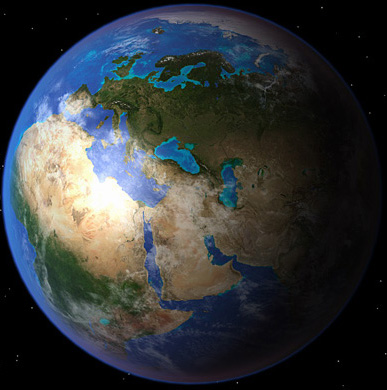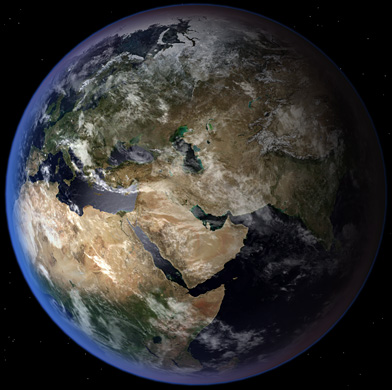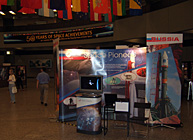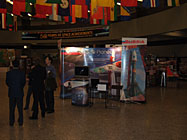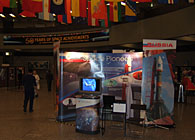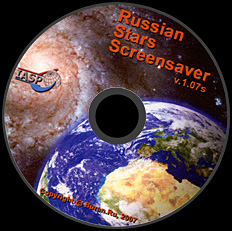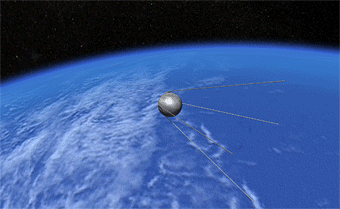 |
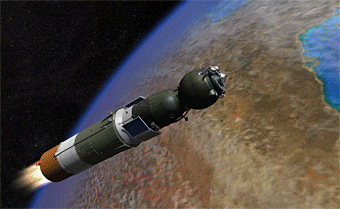 |
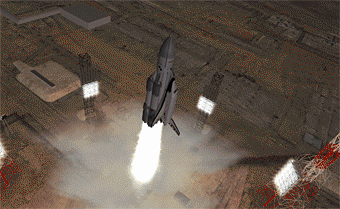 |
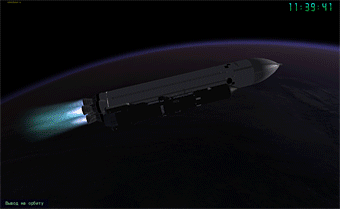 |
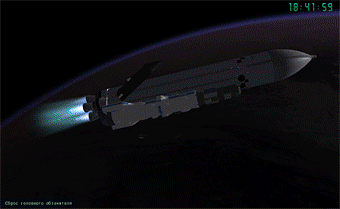 |
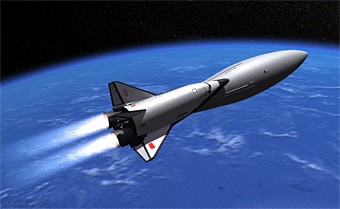 |
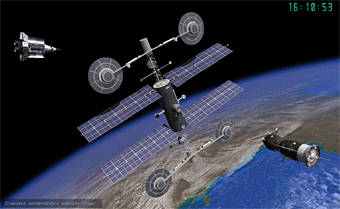 |
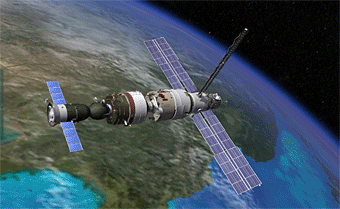 |
Screensaver had been developed following open competition between several programmers. It is created for freeware distribution as an attempt to show the achievements of the Russian space industry and tell a story of the reusable orbital ship "Buran".
On your screen you will see a
stunningly realistic picture of near-Earth space, as well as several spacecraft,
created or envisaged by the really talented Russians:
- the first human-built Earth
satellite "Sputnik", launched in USSR on October 4, 1957;
- "workhorse" of the Soviet and Russian human space
industry - spaceship "Soyuz" ("Union");
-
the most
sophisticated spacecraft ever built in this country - reusable orbital spaceship
"Buran" that made its first and only flight on November 15, 1988;
- demonstration mock-up of the
military orbital laser station "Polyus" ("Pole"), which suffered a failure
during its launch on May 15, 1987;
- the most secret space object in the history of our
space industry - military space laser station "Skif" ("Scythian"), including
detailed description of all stages of its warlike operations;
- orbital plane,
Multipurpose Aerospace System (MAKS),
that has been developed by NPO "Molniya"
since 1988;
- orbital technological complex for industrial
production of semiconductors in space
that was developed as part of MAKS initiative;
- our most lengthy and most successful space
construction project - modular space station "Mir".
IIf you choose "Sputnik" you should be able to hear its voice - the famous "bip-bip-bip" that started the space era for mankind some 50 years ago.
The "Soyuz" Spacecraft is presented in its latest version ("Soyuz-TMA"). All elements of the last orbit insertion flight phase are shown, including operation of the third stage of the launch vehicle; separation of the tail section of the rocket; main engine cut-off; stabilization and separation of the craft followed by the debris avoidance engine impulse and opening of all antennas and solar panels. Then you will be able to take manual control of the ship, trying to achieve 3-axis orientation. If you get bored with that, 30 seconds later the ship will take control over orientation process automatically and will achieve the best position for solar array charging. It will then keep a constant Sun-oriented position. You will be able to see the burning of the rocket third stage tail end in the atmosphere, and with the help of the special switch you can track the third stage until complete burning at its seventh orbit around Earth. And that is not all - you will be able to hear actual crew communication!
"Buran" ("Snowstorm") is not only shown in space flight (in its nominal orientation - left wing to Earth), but you are able to operate the ship's equipment: open and close payload bay doors and even launch a satellite from "Buran" and then catch it with remote manipulator and deliver it back to the payload bay!
If you select "Polyus" ("Pole") you can see an unsuccessful attempt to launch a heavy demonstration mock-up of the first-of-a-kind military laser station. On your screen, action will start from the successful firing of the last stage of the launch vehicle "Energiya" ("Energy") and "Polyus" fairing separation in accordance with the flight plan. After second stage main engines cut-off with the help of 16 solid-fuel engines firing "Polyus" will separate from the launch vehicle and through multiple firing of its liquid-propellant engines will start orienting the station to be ready for the two impulse firings of the main engine which are required to achieve its operational orbit. You will also see the station performing two firings of 4 orientation engines, but due to a software defect, this fails to achieve proper orientation. Spacecraft successfully deploy all antennas and solar panels and jettison all engines and umbilical covers. Unfortunately, orbit-insertion impulse at the revolving ship will fail to provide necessary orbital speed and the result of hard work of thousands of people will follow the third stage of the launch vehicle into Pacific Ocean. For the first time you will be able to follow this tragedy in space through multiple cameras observing both "Polyus" and last stage of the launch vehicle.
The combat space laser station "Skif"
("Scythian") was designed under Soviet counter-plans against the US Strategic
Defence Initiative (SDI) aim at establishing heavy combat orbital stations. We
will show to you all stages of "Skif" operations - from orbital insertion
through effective destruction of enemies' satellites. You can shift from one
camera to another to follow not only the "Skif" and last stage of the launch
vehicle but also the last few minutes of enemy satellites. Constantly changing
its orientation, "Skif" will fire not only "forward" (against oncoming
satellites), but also "backwards" towards satellites moving away from the
station. After each round of firing "Skif" is resupplied through "Progress"
cargo ships followed by another round of laser testing. For better understanding
of the action on screen, each operation is supported by a small on-screen
commentary.
When you watch "Skif" operations,
please remember - it is neither a fantasy nor a fiction. This is a real military
system that was under development in the USSR in the 80's.
Mankind
was not only one step away from uncontrolled militarization of space with
unpredictable consequences, but global (Earth and Space) Apocalypse was even
closer than you think. We had courage at that time to step away from this "road
to nowhere" - it is important not to return to this path again! This is
particularly relevant to US, rather than to Russian activities. So when you
watch "Skif" please remember that from one side we don't really want to build
such things and we rather spend such money for something else. But from other
side if someone likes to create enemies from us we can answer such challenges.
It's difficult task and we can solve it. In the same time it's not a way that we
like but if we have no other choice nothing else can be done. We did it in the
past and we can do this again just to keep the balance.
MAKS can
demonstrate the last stages of the orbit insertion by the orbital plane:
3-components main engines will fire with flare's colour changing from deep
yellow of the kerosene-oxygen firing to bright blue of the hydrogen-oxygen
combination.
After stabilization of the plane-tank
system by firing of the orbital control engines, orbital plane will separate
from the empty tank.
Orbital control jets will fire again twice to achieve proper orientation of the
ship required for the next two impulse firing that in turn required just to
achieve the nominal orbit. It will be done by the consecutive firing of the
orbital manoeuvring engines. Their first firing will take place in several
minutes after separation from the tank followed by the second firing in half
orbit time. And you can see how the empty tank burn in the atmosphere in the
place that is exactly opposite to the start point on the other side of Earth!
After achieving nominal orbit the orbital control jets on the plane will fire
for proper orientation of the ship, followed by the transforming of the wing
consoles into the orbital configuration and opening of the payload bay doors. In
fact you can hear the actual sound of it.
Orbital plant can show you all phases of the industrial production in space.
Initially you can see the last phases of its construction at orbit. Then several
ships will be docked to it: "Soyuz" will bring the first crew of cosmonauts and
engineers to set up the equipment and orbital plane MAKS will ship two transport
containers with raw materials for semiconductors. After set up and checks of
station equipment, ships will undock and the plant will start its operations. As
soon as the raw materials were used or enough semiconductors were produced new
ships will come with the new raw materials and bring back to Earth plates with
semiconductors on them. Visiting expeditions will do the required periodical
maintenance for the station's equipment. We tried to make the station as
realistic as possible with gravitational stabilization and flexible orientation
of the solar panels. You can choose between the various cameras and you can even
look at the station through the visors of the docking ships. It's yours chance
to see the station from the crew member's perspective!
Orbital station
"Mir" (that has two meanings "World" and "Peace") is shown from the construction
phase, i.e. between April 1987 and March 23 until 2001 when it was de-orbited.
We'll start from the initial configuration of base module and astrophysical
module "Kvant" ("Quantum"), with the follow-on docking of orbital modules
"Kvant-2", "Kristall" ("Crystal"), "Spektr" ("Spectrum") and "Priroda"
("Nature"). You can see something that nobody saw before - redocking of modules
from the axial module to the side modules using station's manipulators (we have
modelled redocking of all modules). "Soyuz" piloted ships and "Progress" cargo
ships will constantly dock and undock to/from the station. If necessary, "Soyuz"
ships will redock from one docking port to another, and you can see the whole
process from the working place of "Soyuz" commander. "Mir" construction was
impossible without the crew participation so you can see five (!) EVAs:
- during the first EVA cosmonauts will attach two cargo
booms to the exterior of the station, that will be used later to transport
modules and booms themselves around the station;
- two trusses "Rapan" ("Rapana venosa") and "Sophora" ("Sophora")
will be attached to the "Kvant" module during the second EVA. At the end of "Sophora"
(length 14.5 m) the set of orientation control engines will be set up for the
station's roll control;
- during third EVA the reusable solar panel (MSB-IV)
will be transferred from "Kristall" module to "Kvant";
- improved solar panel with enhanced performance
characteristics will be installed at "Kvant" during the EVA number 4;
- cosmonauts will monitor
unfolding of antenna at "Priroda" module during the fifth EVA.
Screensaver can
demonstrate the interesting experiment "Rodeo" related to the joint manoeuvring
of "Soyuz" ships around "Mir", including the docking of "Soyuz" ("Escape
vehicle") to "Kristall" module.
The historical truth about the "Mir" operations is
violated only once: before the attachment of "Priroda" module to "Mir" (from the
side of "Kristall" module) American shuttle was docked to "Mir", and in the
screensaver it is replaced by "Buran" as it was initially planned by "Mir"
designers.
For your convenience you can not
only jump ahead in the construction process to the point in that you are mostly
interested in, but also switch between various cameras and actually stop
construction at any moment.
Minimum system requirements to start the screensaver:
- processor Intel Pentium 1000 MHz;
- 32 Mb Video Card with OpenGL support;
- 256 Mb RAM;
- Operating system Windows 98/Me/2000/XP/Vista
Ultimate/Windows
7.
|
You may download the installation file (32,5 Mb) from here by pressing the button: |
After the start of the installation program it will be installed at your computer (85,7 Mb of disk space is required for installation) by default at theat the C:\Program Files\BuranScreenSaver directory.
As Gagarin said:
Poekhali! (Let's Go)!
Selection of the spacecrafts is controlled from the screensaver options menu or it can be random. You can also change a lot of other options. Just click the checkboxes in the screensaver options.
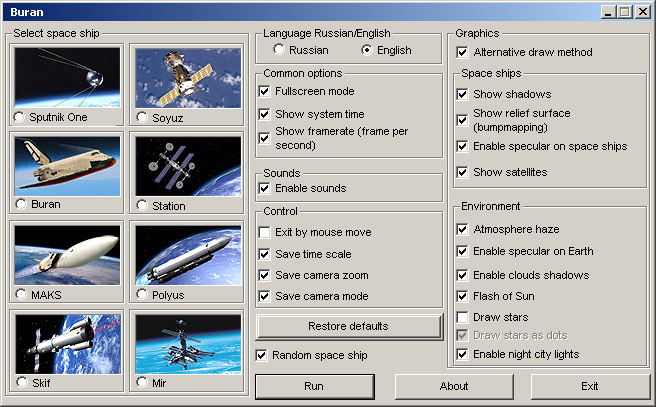
When screensaver is installed you can see the majestic views of our home planet from space - dawns and sunsets, continents and blue oceans, lighted by the Sun, or cities-by-night, sleeping under illusory Moon light (see the screenshot to the right that will open the picture when clicked). And you don't need to pay $25 mln., wait for your turn and after that go through the exhaustive training for the trip into the space just to see it - all you need is to download this screensaver!
Flight control (as well as time and camera operations) is performed through keyboard and mouse, the list of available commands and their brief description is available in the help that you can get by pressing F1 button.
There is a special mode that allows to fix the camera above the any selected point on Earth, allowing you to see our planer rather then spacecrafts.
Typically you can
enjoy nice and smooth picture from the screensaver if you can get at least 15
fps (frames per second) on your computer. If fps is lower and movement is jerky
you can fix it by switching off some visual effects in the options. For example,
shadows at the spaceships can be switched off or simplified, as well as
clear-cut surfaces. You can also use the small textures. The original installer
has the smallest textures. But if you installed bigger textures and it doesn't
work fast anymore you need to uninstall the screensaver, delete all textures and
after that install the screensaver again.
If it doesn't help you can
switching off of the sun light at the oceans, atmospheric haze, cloud shadows,
sun light at the spacecrafts, direct sun light, night lights of the cities and
reflections on the spacecrafts and other parts. All that can reduce the amount
of the required memory up to 33% but with the certain decrease of the picture
quality. You can also switch off other satellites (there are dozens of them in
the screensaver). This will lead to a less realistic presentation although the
overall quality will not decrease too much.
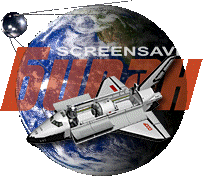 Textures
update:
after the default
installation the earth surface is presented by three groups of textures
(daylight, night and cloudy, 16 graphical files each) with 1024õ1024
resolution assuming 10 km/pixel at the equator. You can significantly improve
the picture quality of the earth surface and clouds if you download patches with
2048õ2048
resolution textures. But please remember that the detailed textures have the
larger size and it will lead to the certain decrease in the fps rate. Typically
average cards in the office computers can support textures with up to 2048õ2048
resolution. More advanced and powerful cards can support even larger textures
with the resolution up to 8192õ8192
pixels. Basically it's all about the amount of the memory on the graphic card.
If textures are too big and can't fin into the available memory it becomes too
slow.
Textures
update:
after the default
installation the earth surface is presented by three groups of textures
(daylight, night and cloudy, 16 graphical files each) with 1024õ1024
resolution assuming 10 km/pixel at the equator. You can significantly improve
the picture quality of the earth surface and clouds if you download patches with
2048õ2048
resolution textures. But please remember that the detailed textures have the
larger size and it will lead to the certain decrease in the fps rate. Typically
average cards in the office computers can support textures with up to 2048õ2048
resolution. More advanced and powerful cards can support even larger textures
with the resolution up to 8192õ8192
pixels. Basically it's all about the amount of the memory on the graphic card.
If textures are too big and can't fin into the available memory it becomes too
slow.
Now, if you would like to improve the picture quality
and overall realism you need to download the patches with the detailed textures
(see below).
Each patch will try to
automatically install the new texture into the default directory of the
screensaver but if you selected some other directory for the screensaver before
you need to specify where screensaver is located.
We provide 9 patches with the improved textures:
| N | Patch (file name) |
Size |
Texture |
Resolution at the equator |
| 1. | BuranScrPatch_Earth2048.exe | 13,75 Mb | daylight surface 16 õ 2048 õ 2048 | 4,88 km/pixel |
| 2. | BuranScrPatch_EarthDark2048.exe | 14,21 ÌÁ |
daylight surface 16 õ
2048 õ
2048 (with "dark" textures) |
4,88 km/pixel |
| 3. | BuranScrPatch_Clouds2048.exe | 24,65 Mb | cloudy weather 16 õ 2048 õ 2048 | 4,88 km/pixel |
| 4. | BuranScrPatch_City2048.exe | 609 Mb | cities by night 16 õ 2048 õ 2048 | 4,88 km/pixel |
| 5. | BuranScrPatch_Earth4096.exe | 43,05 Mb | daylight surface 16 õ 4096 õ 4096 | 2,44 km/pixel |
| 6. | BuranScrPatch_Clouds4096.exe | 102,46 Mb | cloudy weather 16 õ 4096 õ 4096 | 2,44 km/pixel |
| 7. | BuranScrPatch_EarthDark4096.exe | 51,14 Mb |
daylight surface 16 õ
4096 õ
4096 (with "dark" textures) |
2,44 km/pixel |
| 8. | BuranScrPatch_City4096.exe | 1,44 Mb | cities by night 16 õ 4096 õ 4096 | 2,44 km/pixel |
| 9. | BuranScrPatch_Stars4096x2048.exe | 2,354 Mb | stars by night 1 õ 4096 õ 2048 | - |
| 10. | BuranScrPatch_Cosmodrome2048.exe | 15,35 Mb | cosmodrome surface 1 x 2048 õ 2048 | m/pixel |
Choose what you want (taking into account which textures yours computer can support), download and install it.
